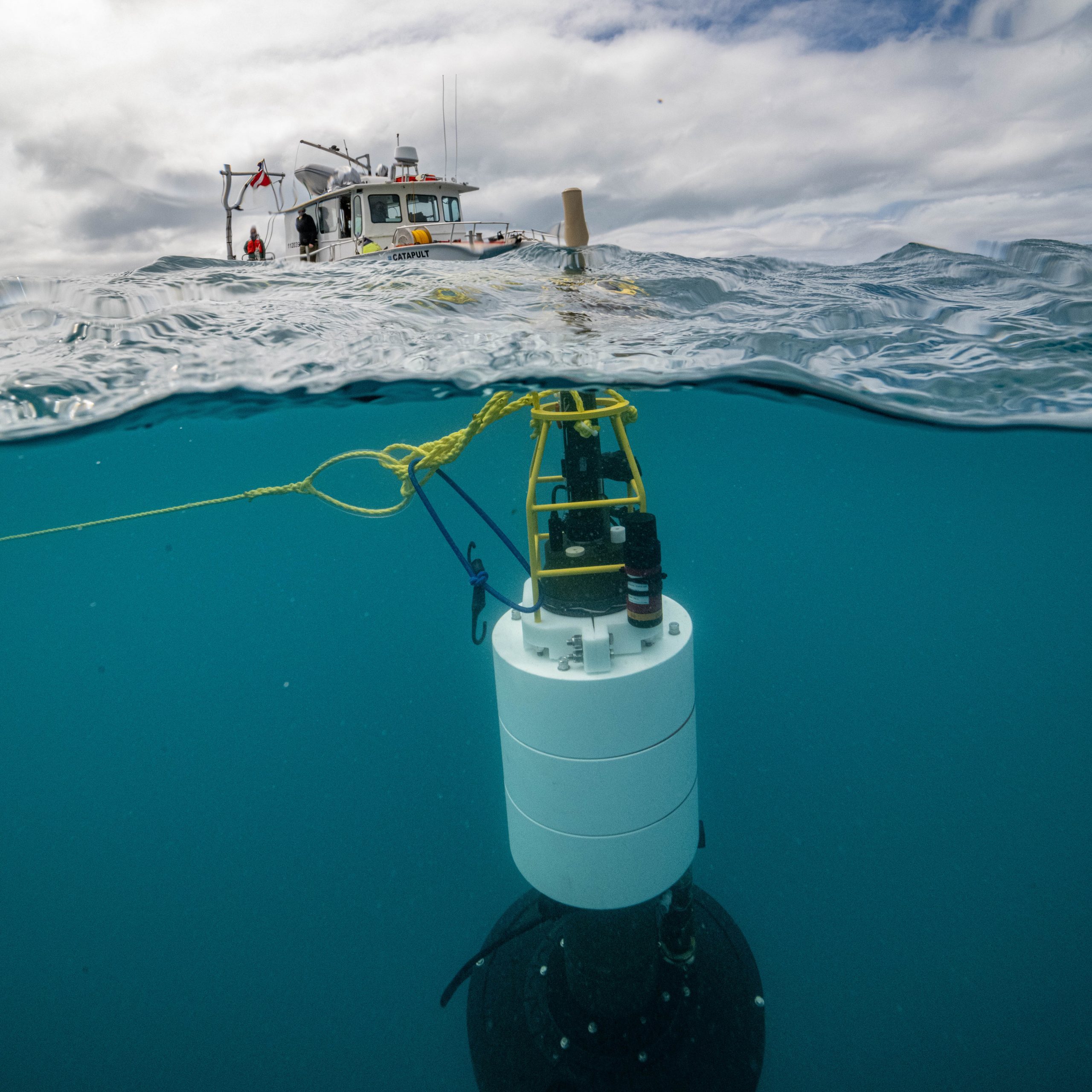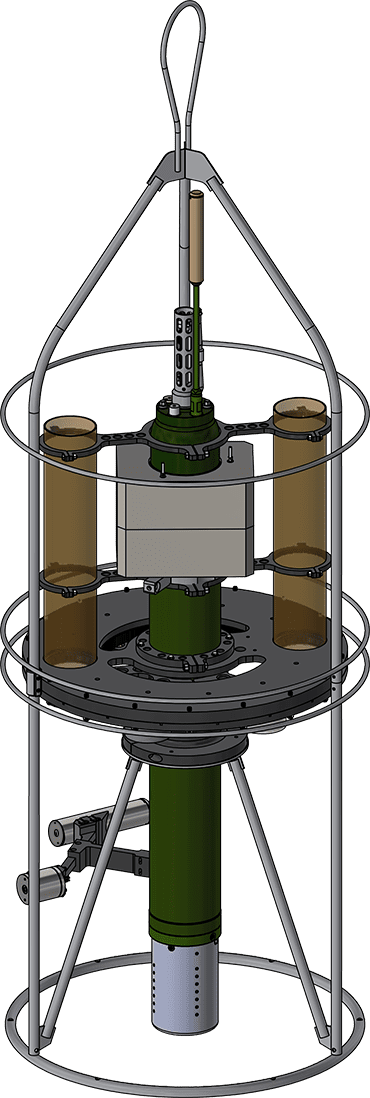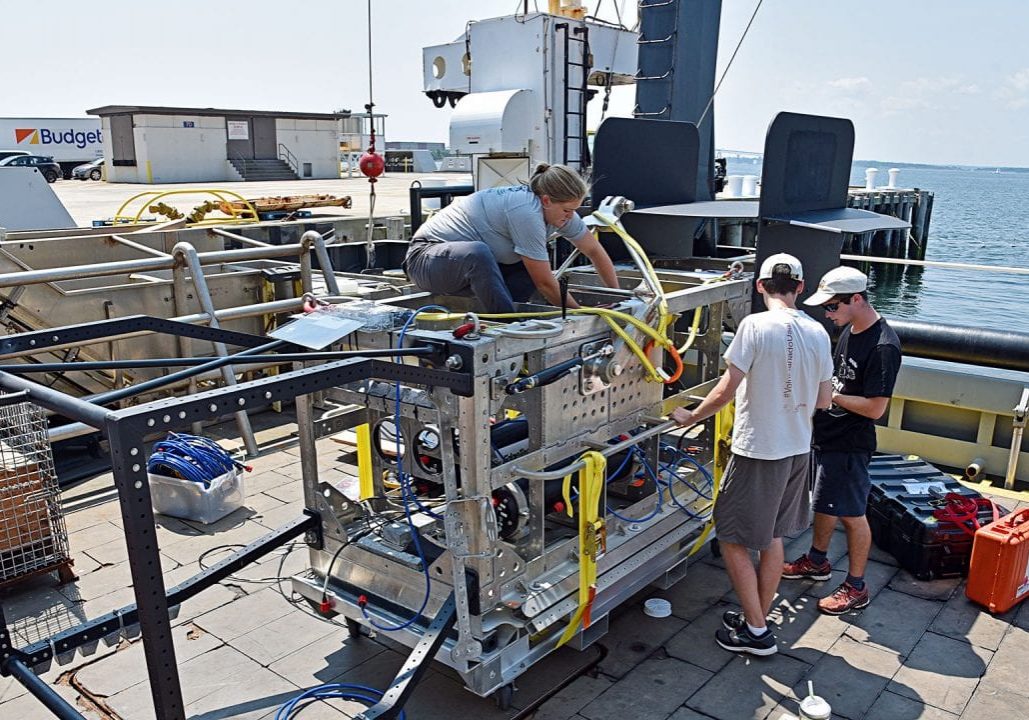The movement of carbon through the ocean twilight zone plays a major role in regulating the Earth’s climate—yet scientists don’t yet understand exactly how this cycle works.
In order to figure out how much carbon the twilight zone removes from the atmosphere, the OTZ team has designed a new submersible system called the Twilight Zone EXplorer, or TZEX. The system is built on an existing French profiling float, a type of submersible instrument that can change its buoyancy at will. By inflating and deflating an onboard oil bladder, It can sink into deep water, stay there for a fixed time, and then rise back up again.
Using a set of high-resolution cameras, TZEX will record the movement of carbon-rich debris called "marine snow" as it sinks through the twilight zone. In doing so, it will give researchers new insight into the movement of organic carbon through the zone, helping them figure out the exact impact it has on global climate.
A CAD representation of the TZEx. While submerged, the device records marine snow abundance and size, captures sinking particles, and preserves their contents for further study at the surface. (Drawing by Kaitlyn Tradd, © Woods Hole Oceanographic Institution)
SPECIFICATIONS
| Depth capability | 2,000 meters |
| Dimensions | Height: 2.2 meters (7.2 feet) Width: .55 meters (1.8 feet) |
| Weight | 68 kilograms (150 pounds) |
| Energy | high power lithium batteries power the float (and the float powers the sampler) |
| Endurance | depending on depth, number of samples, etc. - ~30 days? This is something we are still figuring out! |
| # of Samples | 8 sets of duplicate, discrete samples of sinking particulate, "marine snow" |
| Sensors | CTD, Underwater Vision Profiler (UVP6) strobe and camera system for capturing images of particles, two-way IRIDIUM communication for location services and remote commands |










